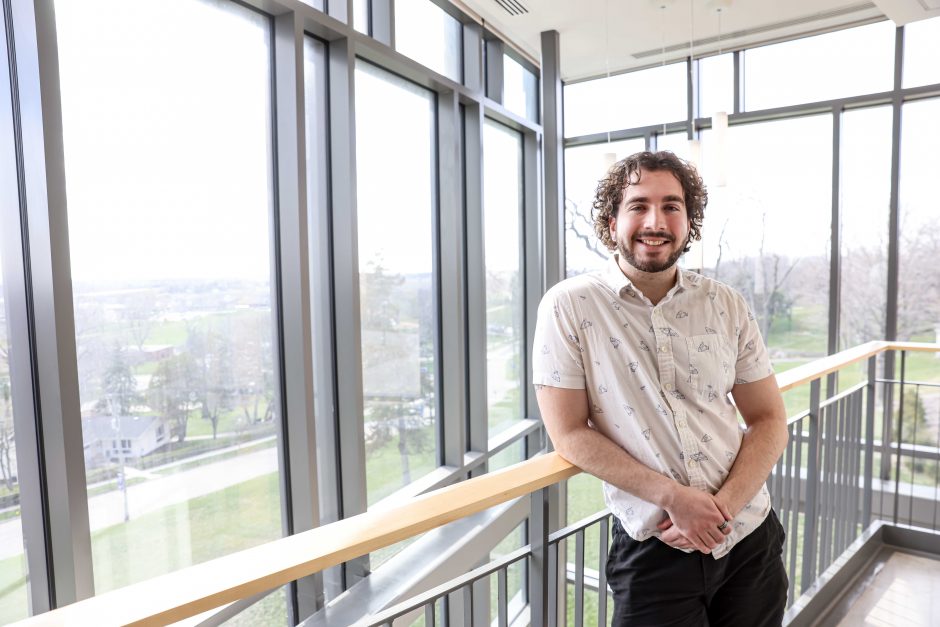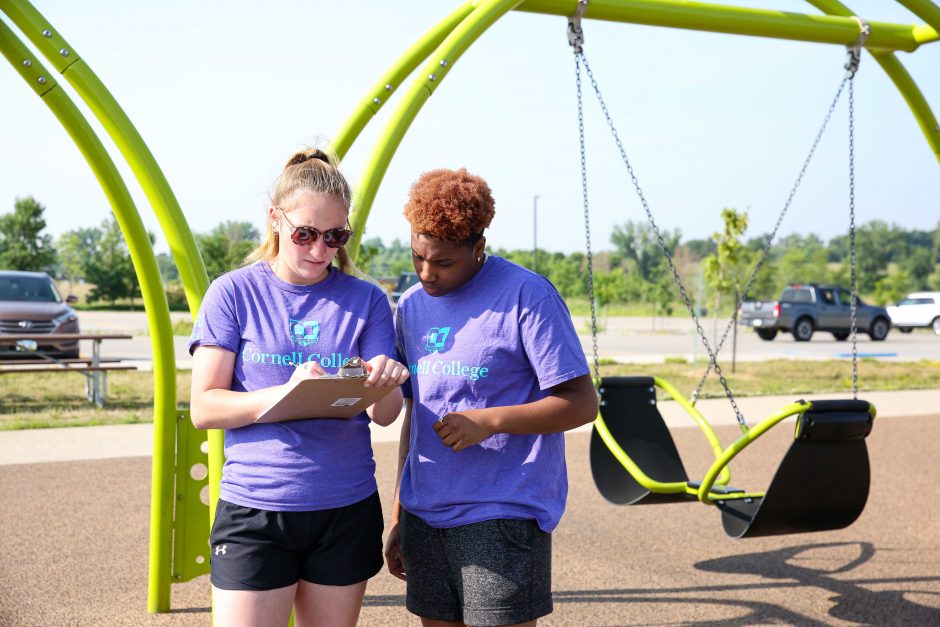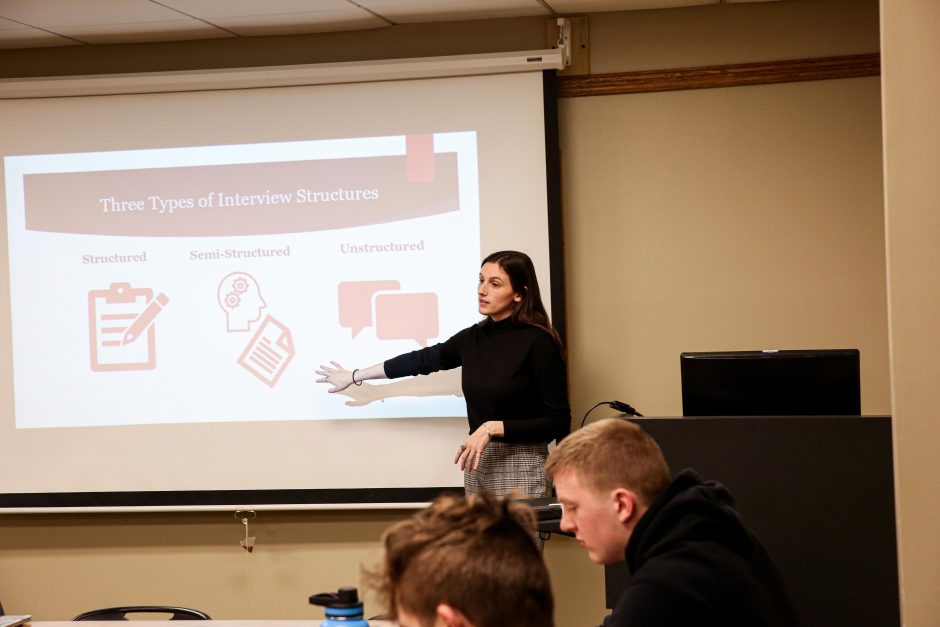Students design projects for engineering course
Engineering students found themselves solving unique problems in their Block 5 course, Electronic Instrumentation, involving heart rate monitors and Etch A Sketch toys.
“The goal of this engineering and computer science course is to get students to know how to build electronics that can then be interfaced with a computer, and we can then have the computer talk to the circuit and the circuit talk to the computer,” said Professor of Physics and Engineering Derin Sherman.
Students worked on three projects during the 18 days of the class. The first was to create a computer-controlled Etch A Sketch. Computer Science major Nick Duesing ’20, who is thinking about a career in robotics or computer programming, said he never thought he’d be using an Etch A Sketch in the college classroom.
“The Etch A Sketch is drawing a spirograph function and the main purpose of the project was to change the mechanical nature of the Etch A Sketch and control it with motors digitally,” Duesing explained. “What I learned from the project is that there is a lot of trial and error to get everything perfect, so everything looks smooth and curved.”
The class also made their own strobe lights, and they worked with a photoplethysmograph.
“Essentially what we have here is a heart rate monitor,” said Kathryn Edmond ’20. “One piece clips on your finger and essentially sends a pulse of light in your finger and the change in the amount of blood in your finger indicates your heart rate.”
Sherman says these projects involve skills that are useful in many careers.
“Physicists often have to build their own equipment because most physicists are performing jobs and experiments that no one else is doing,” Sherman said. “That means you have to know how to build the electronics and how to attach the electronics to computers. A lot of computer scientists need to have these skills as well. And engineers, even if you want to do mechanical engineering, usually you have to have some sort of electronic interface with your mechanical equipment.”
Students say they’ve enjoyed the class.
“We learned a lot about reading schematics for the circuit,” Edmond said. “Making sure we have everything hooked up properly and that we don’t mix things up and burn certain electrical components out. It’s a lot about self-sufficiency and learning to find the information and do the circuitry.”
Tags: engineering



